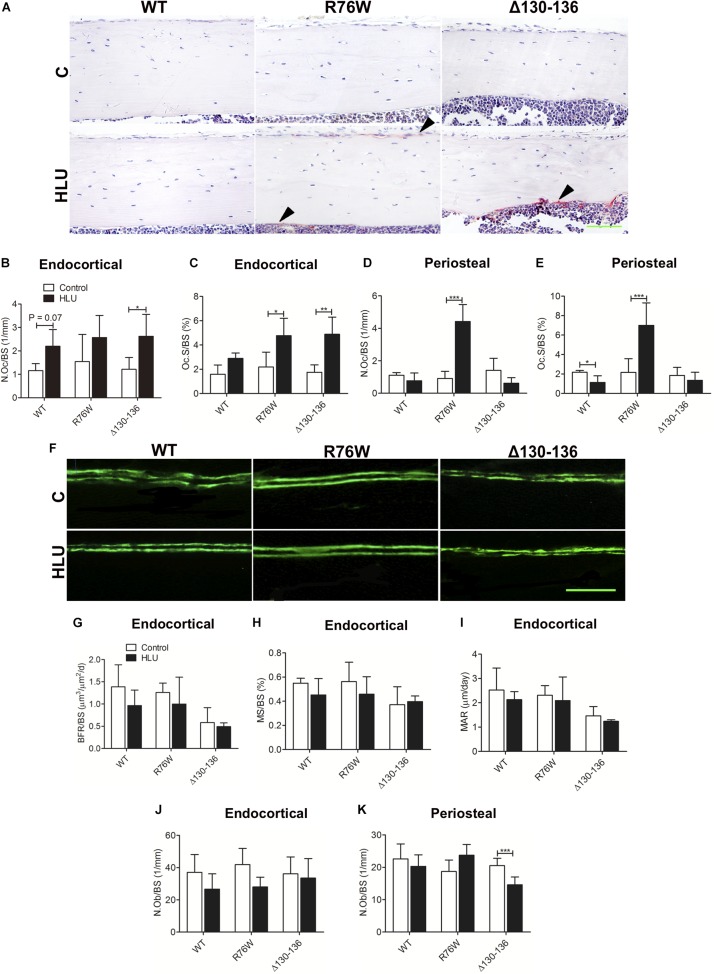FIGURE 4.
Cx43 affects endocortical osteoclast activity and periosteal bone remodeling in response to HLU. Representative image of tartrate-resistant acid phosphatase staining (A) showing increased endocortical osteoclast number and osteoclast area in Δ130–136 mice (B) in addition to increased osteoclast area in R76W mice (C). (D,E) Periosteal osteoclast activity is not obviously increased in R76W mice. Solid arrowheads indicate tartrate-resistant acid phosphatase-positive osteoclasts. n = 3–5/group. (F) WT and Cx43 transgenic mice were injected twice with calcein dye. The femur was isolated and plastic sections of the midshaft endocortical bone were prepared. Bone histomorphometric analysis reveals that BFR/BS (G), MAR (H), and MS/BS (I) are unchanged during HLU, with unloading having little effect in Δ130–136 mice. n = 4–6/group. Scale bar = 200 μm. Endocortical osteoblast number (J) is unchanged during HLU; however, periosteal osteoblast number is decreased in Δ130–136 mice (K). n = 4–7/group. Scale bar = 60 μm. Comparisons via two-way with Bonferroni test (B–E,G–K). Data represent the means ± SD. *P < 0.05, **P < 0.01, ***P < 0.001. HLU, hindlimb unloading; WT, wild-type; R, R76W; Δ, Δ130–136; N.Oc, osteoclast number; Oc.S, osteoclast surface; BFR, bone formation rate; BS, bone surface; MAR, mineral apposition rate; MS, mineral surface; N.Ob, osteoblast number.

